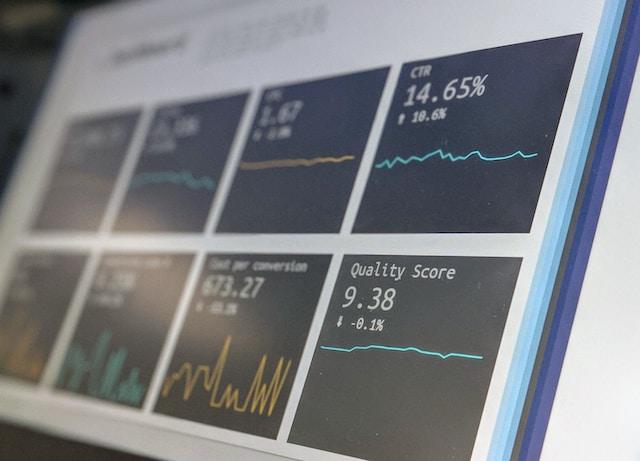Understanding Dashboards in Business
A dashboard comprises various data visualizations sourced from external systems to provide a visual solution to business inquiries. These visual elements are strategically grouped to offer valuable insights efficiently.
Differing from static reports, dashboards dynamically adjust with real-time data changes. They feature interactive components enabling users to filter and organize data, ensuring adaptability to diverse needs and current trends.
Presently, key Dashboard Trends for 2024 emphasize adaptability, diversity, and versatility. An effective dashboard not only presents numerical data but aids in problem-solving, monitors operational efficiency, and identifies correlations within disparate datasets.
Dashboarding
The concept of “dashboarding” is employed by analysts to describe an analytical system development approach where data and visualization tools are provided by developers. Users have the autonomy to determine how data is structured and presented.
Coping with Data Overload in Modern Enterprises
Contemporary businesses grapple with vast amounts of data related to employee training, KPIs, sales metrics, customer feedback, among others. This data serves as the foundation for devising organizational growth strategies. Analyzing these metrics sheds light on internal processes, cause-and-effect relationships, and guides future business decisions.
However, in reality, data processing is a time-consuming task that typically requires expert analysis for comprehension. Traditional data analysis methods used by some companies can take weeks, putting them at a disadvantage compared to competitors who can access crucial insights within seconds, gaining a competitive edge in the market.

Two approaches to address the issue – fixed reports and dashboards
There are two methods for handling data processing: fixed reports offering limited customization options and dashboards that grant access to data via an integration API.
Reports
A common strategy to present data effectively is by generating a set of fixed reports tailored to address specific issues. This approach prompts questions about problem formulation ownership, the relevance of formulations over time, and how to adapt to new data or evolving interpretations of existing data.
Revolutionizing Data Analysis with Dashboards
Enhancing Data Visualization
In the dynamic realm of business, static reports quickly lose relevance. New queries emerge constantly, demanding insights from the data. However, extracting these insights often requires a shift in perspective. Traditional methods involve tedious manual data handling in tools like Excel, consuming valuable time and effort.
Dashboards
Addressing the need for intuitive analytics tools, dashboards offer a visually appealing solution for users.
Busy managers seek quick, actionable insights rather than sifting through raw data or rigid reports. They require a narrative that uncovers trends and correlations within the data, presented in a user-friendly format.
For instance, when a company launches new product training, it seeks immediate feedback on market penetration rates. Implementing an onboarding system necessitates tracking newcomer adaptation speeds. These diverse scenarios demand agile responses beyond standardized reporting frameworks.
The Vital Distinctions: Dashboard vs. Report
-
A report presents information within defined parameters. In contrast, a dashboard offers flexible data visualization tailored to the user’s needs, allowing easy modifications as requirements evolve;
-
Analyzing reports involves studying tables and data, risking errors from human oversight. Dashboards present data in user-friendly formats, eliminating the need for analysts or developers. Additionally, dashboard data is always current, unlike reports that may be outdated or manually altered;
-
Customizing reports is costly and time-intensive. Dashboards provide pre-built solutions that can be easily personalized without specialized expertise.
Conclusion
Over time, dashboards have become preferred over traditional reports due to their ability to process vast amounts of data efficiently, enabling faster decision-making and enhancing the visual representation of business outcomes for improved adaptability.
![Motion Array – Christmas Slideshow [AEP] Free Download Motion Array – Christmas Slideshow [AEP] Free Download](https://i2.wp.com/softcrackhub.com/wp-content/uploads/2024/09/Motion-Array-Christmas-Slideshow-AEP-Free-Download.jpg?w=150&resize=150,150&ssl=1)
![VideoHive – The Slideshow – Rhythmic Slideshow [AEP] Free Download VideoHive – The Slideshow – Rhythmic Slideshow [AEP] Free Download](https://i0.wp.com/media.getintopc.com/2023/08/Envato-Market-Picture-Frames-Slideshow-AEP-Free-Download-GetintoPC.com_-300x169.jpg?w=150&resize=150,150&ssl=1)
![CreativeMarket – Bundle / Christmas Scene Creators [JPG, PNG , PSD] Free Download CreativeMarket – Bundle / Christmas Scene Creators [JPG, PNG , PSD] Free Download](https://i2.wp.com/softcrackhub.com/wp-content/uploads/2024/09/CreativeMarket-Bundle-Christmas-Scene-Creators-JPG-PNG-PSD-Free-Download-GetintoPC.com_-300x200-1.jpg?w=150&resize=150,150&ssl=1)
![Motion Array – Wedding Ceremony [AEP] Free Download Motion Array – Wedding Ceremony [AEP] Free Download](https://i2.wp.com/softcrackhub.com/wp-content/uploads/2024/09/Motion-Array-Wedding-Ceremony-AEP-Free-Download.jpg?w=150&resize=150,150&ssl=1)
![Motion Array – Photo Memories Gallery [AEP] Free Download Motion Array – Photo Memories Gallery [AEP] Free Download](https://i3.wp.com/softcrackhub.com/wp-content/uploads/2024/09/Motion-Array-Photo-Memories-Gallery-AEP-Free-Download-GetintoPC.com_-300x157-1.jpg?w=150&resize=150,150&ssl=1)
![Motion Array – Short Slideshow [AEP] Free Download Motion Array – Short Slideshow [AEP] Free Download](https://i3.wp.com/softcrackhub.com/wp-content/uploads/2024/09/Motion-Array-Short-Slideshow-AEP-Free-Download.jpg?w=150&resize=150,150&ssl=1)







